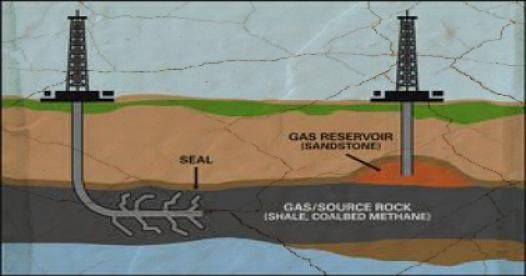The extraordinary increase in the production of natural gas from shale formations in the U.S. played a central role in the 2012 elections. As President Obama and Governor Romney campaigned throughout the battleground states of Ohio, Pennsylvania, Virginia, Colorado and elsewhere, the campaign often seemed to be a contest as to who could praise the positive impacts of domestic shale gas production more. Indeed, despite the lingering industry angst about the number of federal agencies in Obama's Administration actively exploring new regulations on shale gas development, President Obama pledged to create 600,000 new jobs connected to natural gas by the end of the decade in his acceptance speech at the Democratic convention. This pledge, combined with a desire to ensure a solid economic legacy, will likely caution President Obama against actions in his second term that could radically reduce the level of domestic shale gas production.
Despite this, important regulatory processes will continue to impact domestic shale gas production in the U.S. at both the federal and state levels. Additionally, both the Democrat-controlled Senate and the Republican-controlled House will have renewed interest in all aspects of shale gas development, including oversight over major regulatory decisions taking place in the Executive Branch.
While there are any number of federal regulatory processes under way in the Executive Branch, in general, we expect the following regulatory actions and decisions to be the subject of intense scrutiny for the Obama Administration in their second term and in the 113th Congress:
EPA Hydraulic Fracturing Study
The primary federal study on the impact of hydraulic fracturing on drinking water resources is in the process of being conducted at multiple study sites throughout the country. EPA continues to plan on releasing a first progress report by the end of 2012 and have the final draft report submitted for peer review in 2014. If early data in 2012 and/or the final report contradicts scientific evidence refuting allegations of water contamination from hydraulic fracturing operations, the Obama Administration will be under increased pressure from outside groups and Members of Congress to take regulatory action to protect the environment and/or public health.
EPA Guidance on Hydraulic Fracturing Operations Using "Diesel" Fuel
The Safe Drinking Water Act exempts hydraulic fracturing activities except in cases where "diesel" fuel is used in the operation. EPA is developing permitting guidance for issuance on the use of diesel fuel as an additive in fracturing fluids. There is significant concern in industry and on Capitol Hill that the final guidance will be expanded to include a broader definition of "diesel fuel" that triggers a new permitting requirement for hydraulic fracturing activities involving the constituents of diesel.
BLM Regulation of Hydraulic Fracturing on Public Lands
BLM has proposed revised regulations for hydraulic fracturing on public lands. The regulations include requirements for the disclosure of chemicals used in fracturing activities, well integrity standards, and water management requirements. President Obama had a sharp exchange with Governor Romney in the second Presidential debate regarding production on federal lands. Congress and industry will watch closely when the BLM final rule is issued to see if President Obama will greatly increase the burdens for producers on federal lands. Anticipated changes in leadership at DOI could impact the timing and details of the final result.
DOE Policy on LNG Exports to Non-Free Trade Agreement Countries
The Natural Gas Act provides that for applications to export LNG to non-FTA countries (e.g., Japan), DOE must make a case-by-case determination that such licenses are "consistent with the public interest." How DOE interprets this phrase and, accordingly, how it treats the approximately 27 billions of cubic feet (bcf) of liquid natural gas (LNG) export applications currently in line is the crux of the issue that has everyone from industry to unions to NGOs to Capitol Hill on edge. DOE solicited two studies on the impact of increased exports of LNG on domestic natural gas prices. The first study, completed by the Energy Information Administration (EIA) and released on January 19th, 2012, showed varying degrees of increases in domestic natural gas prices as a result of increased LNG exports. The second study, performed by an outside consultant, was to be released in April 2012, then by the end of the Summer, and now, most recently, by the end of the year. It is widely expected that this second study will also show some level of increase in U.S. natural gas prices at various levels of LNG exports.
Based on these studies, in President Obama's second term, we expect DOE to propose a de-facto cap on LNG exports for anywhere from 6 - 10 bcf/day. Furthermore, we expect DOE to propose criteria under which the pending applications will be evaluated. In our view, it is likely that such criteria will focus on the viability and geographic diversity of the projects as opposed to the date on which the particular application was filed with DOE.
EPA Enforcement Initiative
EPA's Office of Enforcement and Compliance Assurance (OECA) has rolled out a national enforcement initiative (NEI) for the 2011-2013 enforcement cycle. NEIs are concentrated enforcement initiatives led by national and regional enforcement teams that emphasize compliance with existing federal requirements to address complex pollution problems within a particular sector or source type. If history is any guide, EPA will also seize the "energy extraction" NEI as an opportunity to compel additional controls not currently required under existing federal statutes and regulations. EPA Regions 3 and 6 have already begun issuing information requests to targeted companies and inviting certain companies in to discuss settlement options. In President Obama's second term, we expect continued emphasis on this initiative and OECA to push industry beyond its regulatory compliance obligations.




 i
i

